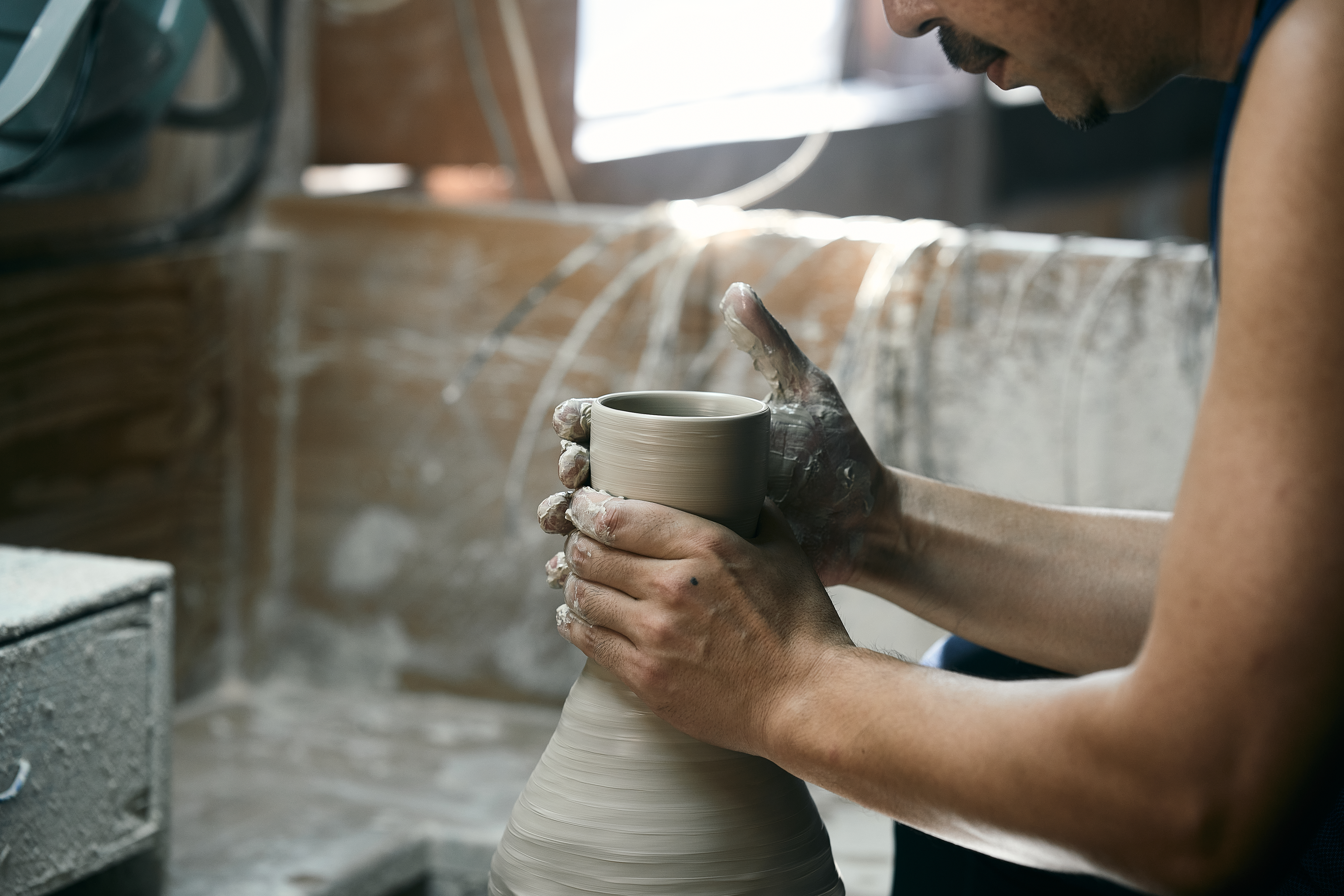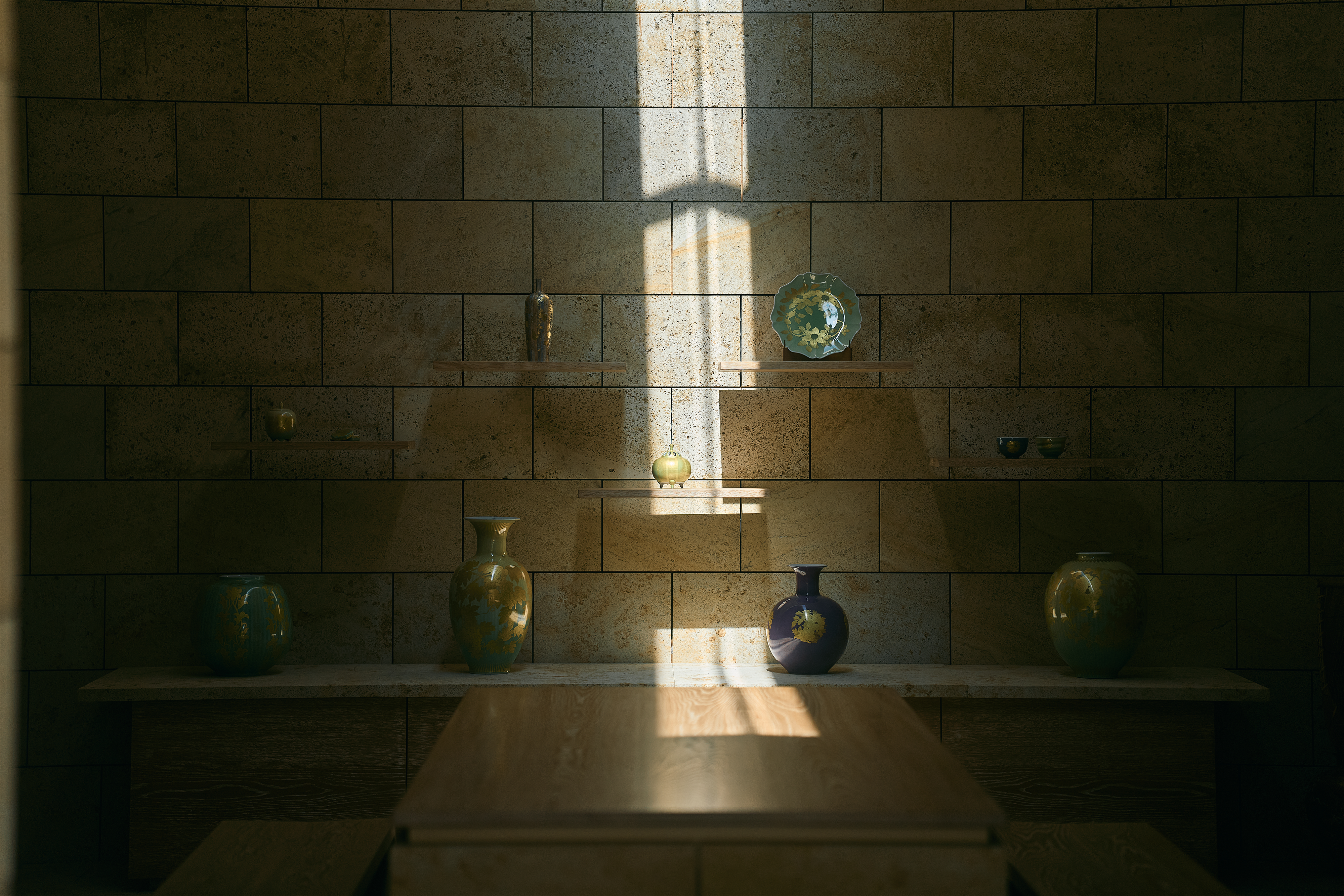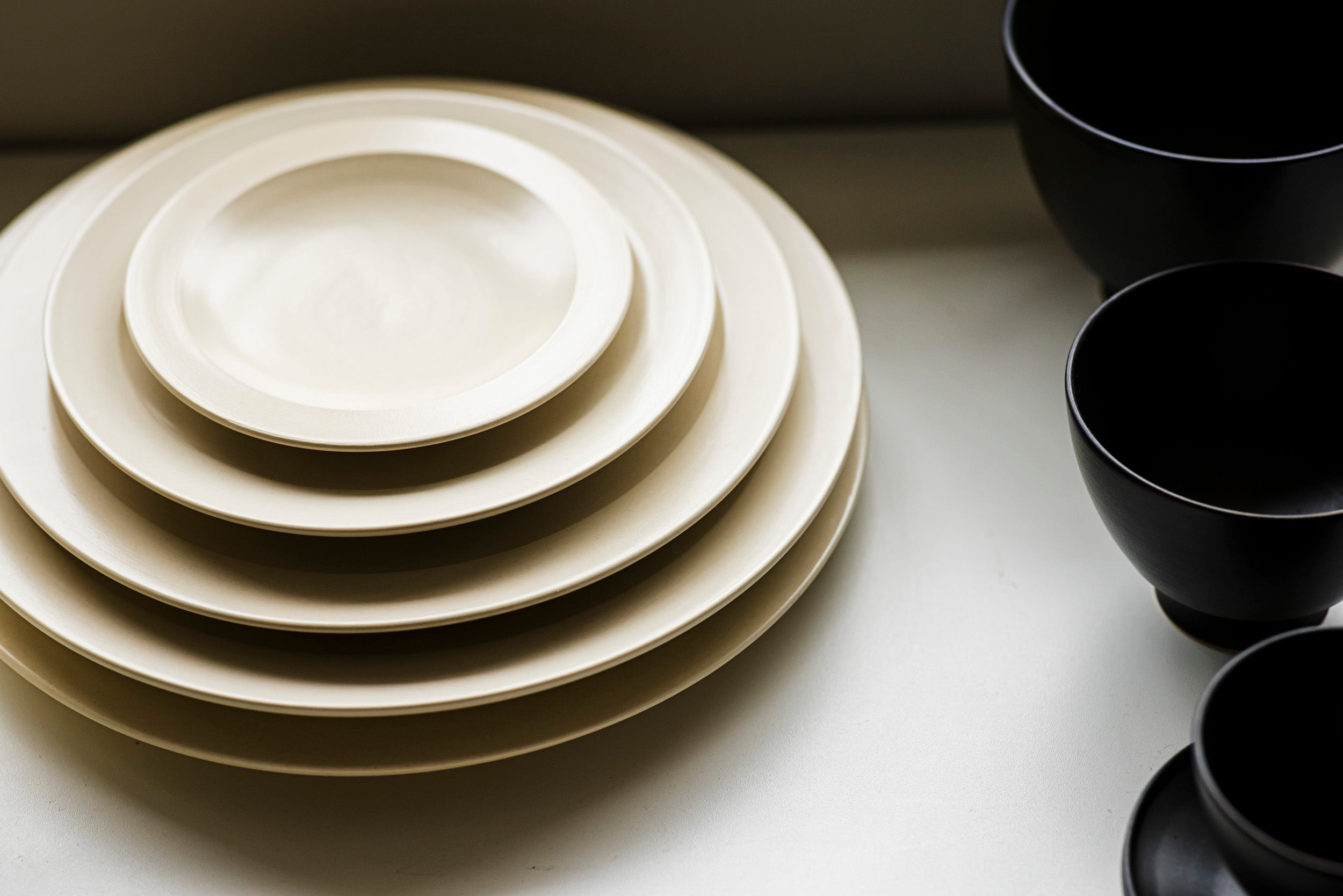
「HANASAKA」の白に何をみるか【第一話】
伝統工芸の持続可能性
繊細で華やかな絵付けが特徴的な九谷焼。しかし、そのキャンバスとなる生地を焼く窯元があることはあまり知られていません。その素材である花坂陶石から九谷の粘土を製造する「谷口製土所」では、花坂陶石から取り出された残土を活用して産地の可能性に挑戦しています。九谷焼に新しい可能性を見出す「HANASAKA」の魅力に迫ります。

土、器、絵の三位一体
石川県無形文化財に指定されている九谷焼の発祥地は加賀国江沼郡九谷村で、現在の石川県加賀市山中町九谷村にあたります。現在の金沢地方を治めていた加賀藩は武で天下統一を果たした徳川家に対し、芸術や工芸で世を治める文化奨励策として全国各地から名工や文化人を招きました。江戸時代初期にあたる1655(明暦元)年頃、加賀藩の依頼によって佐賀県の有田で陶工を学んだ後藤 才治郎が九谷村に窯を開きます。しかし、この最初に作られた窯の歴史は数十年で幕を閉じ、その時代の九谷焼は「古九谷」と呼ばれています。現在の九谷焼は1800年頃に金沢の春日山窯にて復興します。これを「再興久谷」と呼び、小松市花坂村から出土した「花坂陶石」という素材を主な原料として制作されています。
九谷焼は、大きく分けて土造り・成形・絵付けの工程を経て制作されるのですが、それぞれに専門の職人が別れているところが特徴です。これは明治以降のジャポニズムによって九谷焼が輸出陶磁器として世界1位になるほど需要が高まり、効率化と専門性を高めるために分業体制が推進されたことによります。産業として大きく栄えた九谷焼は、こうして輸出向けに大量生産を行っていったのです。上絵付を専業とする窯、そのキャンバスとなる白素地(きじ)を轆轤(ろくろ)で手作りする窯。そして、その素材となる粘土作りを担う製土所が一体となることで現在の九谷焼が受け継がれてきました。緻密で鮮やかな絵付によって工芸品として高く評価をされてきた九谷焼ですが、現在でもそれぞれが職人としての技術を高め合い、より良い作品を生んでいるのです。

花坂陶石の採掘場。黄色っぽい岩肌が確認できる。

久谷焼きの種類や歴史が丁寧に解説されている。

「CERABO KUTANI」で歴史について解説する谷口 浩一さん。
久谷を支える「花坂陶石」
現在、九谷焼の産地には製土所が2軒しか残っていません。そのひとつである「谷口製土所」では、3代目の谷口 浩一さんが土作りを担っています。花坂陶石は鉄分を多く含み、還元焼成によって青みがかった美しい白色の磁器になります。また、高熱でも形状を保つ耐火性と適度な粘り気を兼ね備え、轆轤での成形や複雑な造形にも向いています。
すべての起点となる土作りは、採石場での掘削作業から始まります。採掘されてきた花坂陶石を粉砕し、「スタンパー」という機械で7時間ほどほぐすように粉砕していきます。堅い部分は小石のまま残り、柔らかい部分はより細かい石粉となって水槽の中で水と混ぜられ、鉱物の比重によって分離させる「水簸(すいひ)」という工程を経て不純物を取り除いていきます。良質な泥を脱水し、長石や珪石を独自の配合でブレンドすることで九谷焼に相応しい粘土が仕上がります。
「陶石の不純物のなかには長石や珪石などは含まれているのです。しかし、自然のままでは成分が安定せず、良い形や色に揃わない。それでは品質が保てないということで、主に轆轤用には昔ながらのやり方で良質な粘土を作っています。そのプロセスを見学してもらえるのが、製土工場やギャラリー、体験工房などを兼ね揃えた、複合型の九谷焼文化施設『九谷セラミック・ラボラトリー(通称:CERABO KUTANI)』です。谷口製土所の工場を施設内で稼働させることで、質の高い磁器土を製造する工程を間近で見学してもらえます」

花坂陶石の原石。左は不純物が多いのがわかる。

陶石が粉状になるまでスタンパーで砕く。

比重によって堆積していくのが良く分かる。
久谷に吹く新しい風
谷口さんは北陸を中心に広告代理店の営業や出版社で編集の仕事をしていました。祖父が始めた製土所を継ぐにあたって、土作りだけでは続けていくことは難しいと感じていたといいます。
「地元が九谷焼の産地であることも、その素材を作る大切な仕事だとも思っていたので興味を持っていました。好きな仕事を好きなだけやって、タイミングが良かったのもありますし、ものづくりに関わってみたかったのです。ただ、外から見ていると課題というか、もっとやれることが色々ありそうだなと言う気もしていました。そこで、父に週の半分は作業を覚えながら製土所の仕事をやって、残りの半分は自分でブランドを立ちあげたいという話をしたのです。土作りだけでは食べていけなくなるかもしれないし、もっと九谷焼の魅力や仕事の面白さをいろんな人に知ってもらわなければいけないという危機感もありました。そもそも、九谷焼の土が花坂陶土だということさえ知られていない。そこで、HANASAKAというブランドを立ちあげ、“粘土屋だけど面白いことをやっている”という流れを作っていこうと思ったのです。実際、素晴らしいろくろ師でも完成品を作ったことはなく、どこか下請けのように注文を待っている雰囲気がある。この美しい形や土の優しい風合いを表現して、艶やかな上絵は無いけれどシックでカジュアルな九谷焼というものを出していきたいと思うようになりました」

自らブランドを立ちあげることで勉強にあった部分も多い。

窯ごと、作家ごとに精製される粘土たち。

こちらはミルで素材を配合できる工場。谷口製土所の強みだ。

長年にわたって久谷焼きを支えてきた。
4割が廃棄される現実
こうして2013年にHANASAKAを立ちあげた谷口さん。土作りの仕事をメインにしながらも、さまざまな製品開発をはじめます。しかし、2017年に父親である2代目が亡くなり、3年ほどはブランドの製品開発や営業を休まざるを得なくなりました。本業に専念しながらも、あることがずっと気になっていたといいます。それが、製土の際に不純物として取り除かれる大量の残土です。「製土の一連の流れで普通に産業廃棄物としてお金を払って処理していた」というその量は、採石した花坂陶石の実に4割にものぼるといいます。
「土も資源のひとつで無限に掘り出せるわけではありません。しかも、良い土から使っていけばどんどん残土の割合は増えていき、いつかは花坂陶土もなくなってしまう。環境としてのSDGsももちろんですが、製土所としてこの現実に向き合わなければ、そもそも九谷焼という文化の存続に関わるという課題意識が芽生えてきたのです」
そこで開発したのが花坂陶石の残土を原料にした釉薬。ひとつの陶石を粘土と釉薬の二つに分け、また一つの作品に焼き上げる。粘土屋にしかできない九谷焼の名前は「Une(ユンヌ)」。およそ九谷焼のイメージとはかけ離れた、優しい風合いのシリーズが誕生しました。

工場の外に積み上げられる残土の花坂陶石。

「Une(ユンヌ)」の成り立ちを図解したもの。

柔らかい乳白色と優しい手触りが心地よい。



